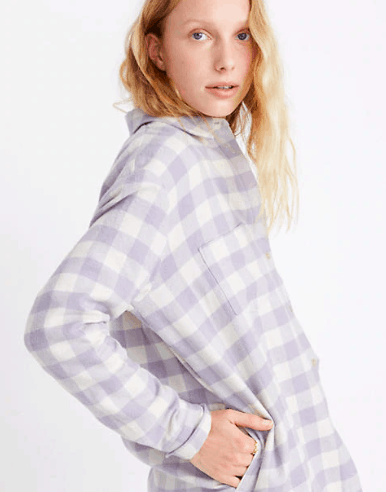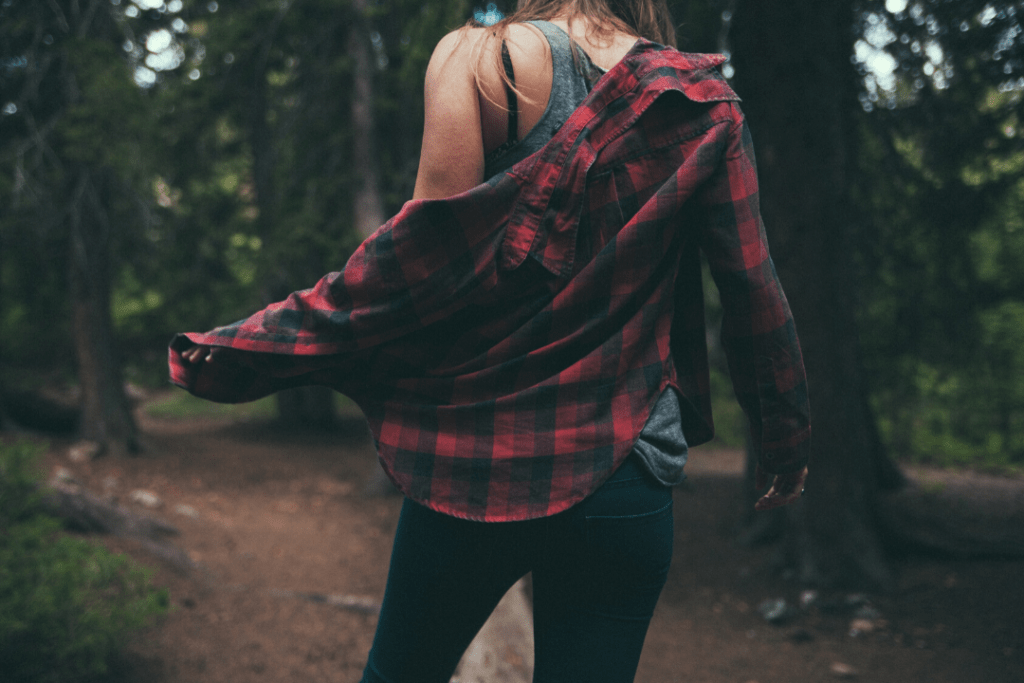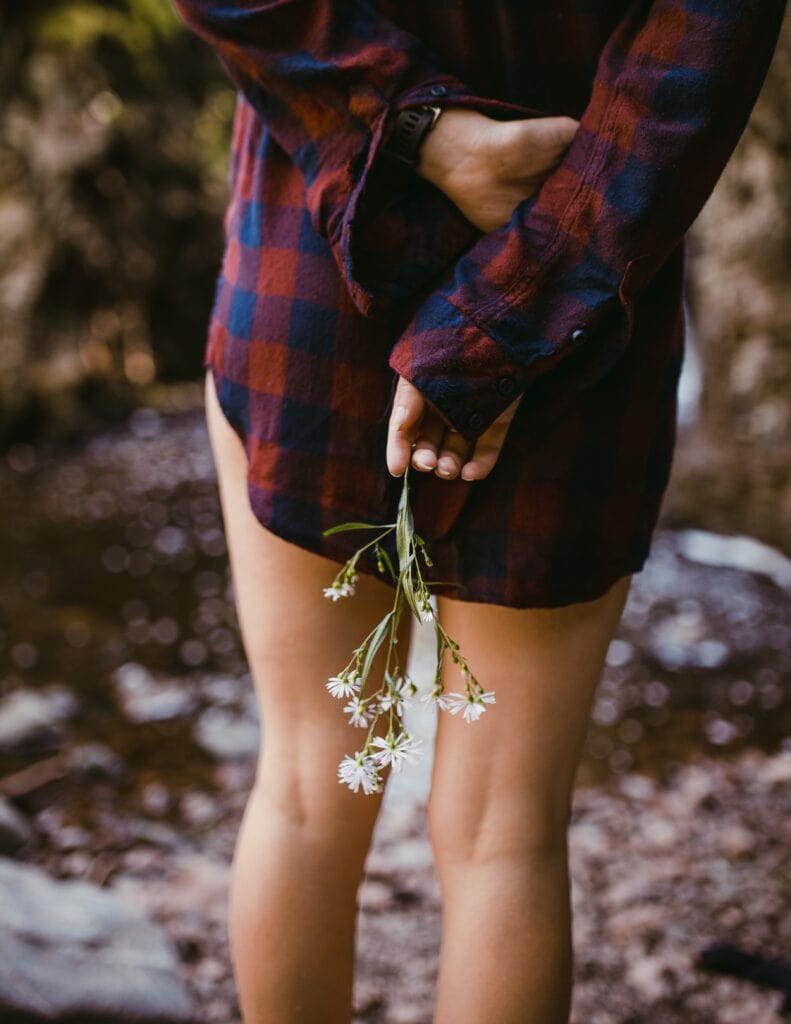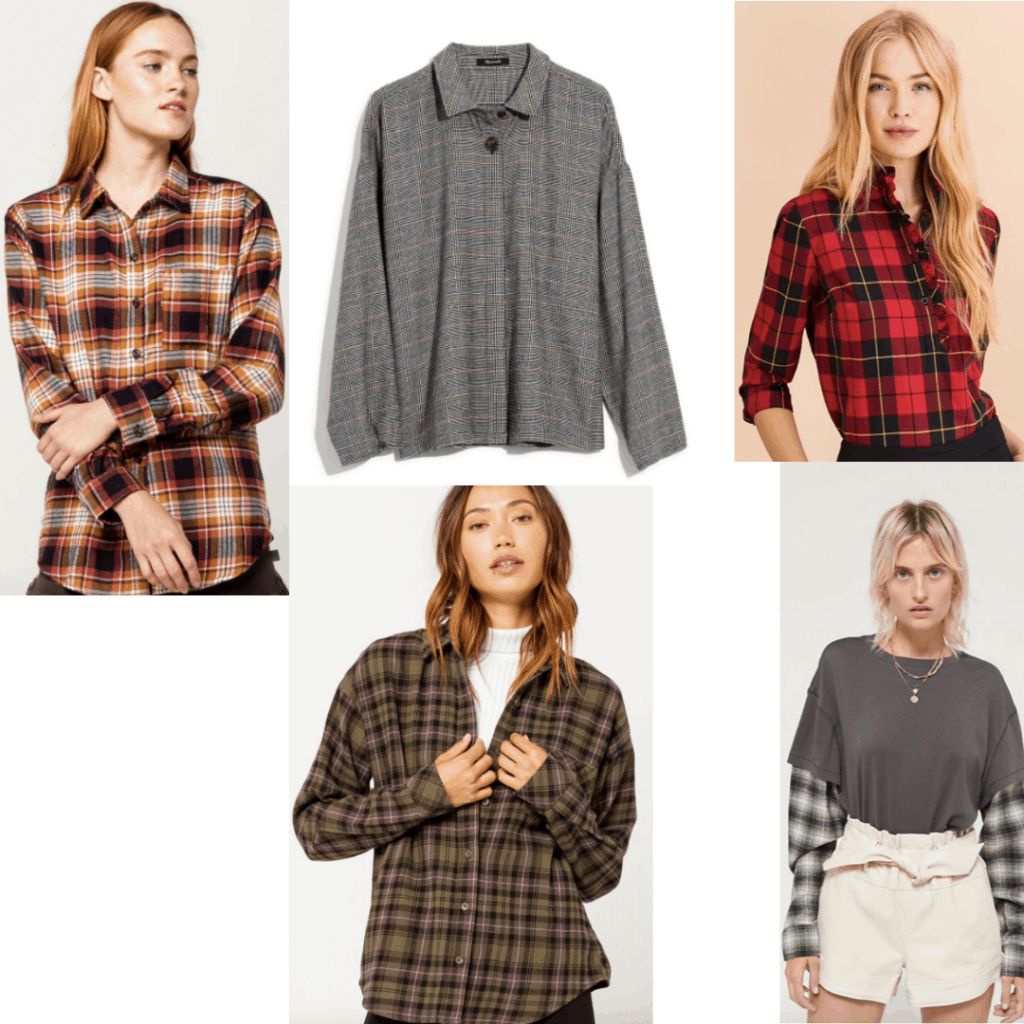
How’s the weather where you are? Where I live, we’re still going through some warm days and cooler days, but every morning when I wake up I’m wishing for a solid forecast of fall breezes and clear skies.
This time of year is made for cider, caramel popcorn, twinkly lights, goofy nights in with your girls, and the coziest of all clothing: flannel shirts. A little rustic, a little soft in the sleeves, and packed with easy-to-throw-on comfort, flannels are the epitome of casual yet cute attire.
Want to know more about these comfy shirts? Keep reading!
Below, I’ve compiled a history of flannel as a fabric for apparel, with a focus on flannel shirts in particular, where appropriate.
Table of Contents
History of Flannel Shirts

To get you up to speed on the history of flannel, here are some fun facts about flannel shirts that you probably didn’t know.
1. Flannel is a Fabric
According to this fashion dictionary, flannel fabric was originally made from either carded wool or worsted yarn. Carding is a process that breaks up the wool fibers so they lay more or less parallel to one another.
Modern-day flannels are usually made with cotton, wool, or synthetic fibers.
2. Flannel Goes Back a LONG Time
Flannel can be traced back to 17th century Wales, where farmers wore flannel shirts to protect themselves from the elements. This tradition would continue for other blue-collar workers as the prevalence of flannel grew.
The word “flannel” most likely comes from the Welsh word gwlanen, meaning “woolen article.”
3. You can thank Hamilton Carhartt for flannel in the states
One man who is often credited for popularizing the flannel shirt in the United States is Hamilton Carhartt.
He founded his namesake company in 1889. Wanting his clothes to be specially made for the working class, he visited railroad workers all over the country to determine the best tactics for creating top-notch utility products, including flannel shirts.
He sought to set a standard of excellence, which he believed was reflected in every article he produced. Soon, men everywhere were wearing flannel as part of their workwear.
4. There’s a big difference between flannel and plaid
A few of you may be wondering, what’s the difference between flannel and plaid shirts? At its most basic, plaid is a pattern that is believed to have originated in Scotland, whereas flannel is a fabric, as we’ve learned.
So why the confusion? As tartan plaid looks so at home on flannel, the print and fabric were often used together and quickly became synonymous in the discussion. The perfect example of this is the stereotype of the lumberjack, who in the 20th century popular culture was always depicted with a pair of boots and the ubiquitous plaid flannel shirt.
5. Flannel is a grunge staple
Some associate flannel with the grunge look of the 1990s, but this article from T Magazine disagrees. It argues that by the time flannel was introduced as “grunge,” the look was a watered-down version of its original self.
6. Flannel and hipsters go together
Flannel shirts today are often linked to hipster culture. Of hipsters, TIME notes, “Everything about them is exactingly constructed to give off the vibe that they just don’t care.” While hipsters may pretend not to care, I know that if they’re rocking flannel, they understand the true significance of comfort and style, something we can all appreciate!
Why We Still Love This Trend

Now that you’ve read the history behind flannel and plaid flannel shirts, here are a few reasons to keep them in your wardrobe rotation this season:
1. They’re warm.
It seems simple, but this trait is one of the best things that flannel shirts have going for them. We’ve seen how difficult it is to dress well for cold and/or freezing weather, and the flannel shirt could be your chilly season fashion lifesaver. A rugged alternative to a classic cardigan, layer it on over your everyday outfits to stay toasty and stylish.
2. They’re easy to wear.
If your schedule is anything like mine, you’re always running to something! Whether you’re heading to class, meetings, or study sessions at Starbucks, you’re going to be happy in a flannel shirt.
This trusty item will be just as functional for your busy days as it is on your relaxed days, and you’ll always look cute.
3. They come in lots of colors!
Looking for flannel in your favorite hues? Old Navy, Urban Outfitters, H&M, and American Eagle all have a variety of flannels out right now, one of which is bound to speak to your style!
Some Cute Flannel Shirts We Love:

Products L-R, Top to Bottom: Tilly’s, Nordstrom, Brooks Brothers, Tilly’s, Urban Outfitters
Flannels can go with pretty much anything, but owning different cool flannel tops in a variety of shades makes styling completely foolproof.
The button down original flannel is amazing when layered on top of turtlenecks and t-shirts. Meanwhile, the red flannel blouse is good if you have anywhere a bit more dressy to go to.
Prefer an edgier look? You can go with the t-shirt that has flannel sleeves.
Your Turn!
Do you love flannel shirts? How do you like to style them? What’s your number one reason for wearing them? Any other trends you’d like to see featured? Leave a comment and let’s chat!

The tartan pattern originated in Celtic cultures sometime between the 6th and 8th centuries BC and is, of course, still famous as an emblem of Scottish culture. It was around the 17th and 18th centuries AD that plaid kilts as we would recognize them, became the norm for Scottish clansmen. http://blog.remington1816.com/the-history-of-flannel/
I love flannel because it’s a clutch part of the comfy-cute look, which I do on a regular basis haha.
Oh, good ole Carhartt. 😉
I love my flannel shirt! It’s purple and white plaid and I wear with a black cami underneth and oh it’s so warm and comfy <3 🙂
I love flannel. It’s warm and cozy and if you find out what works for you, it looks amazing.